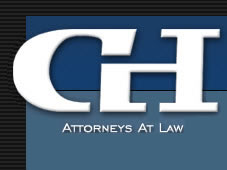What actions to take and what to expect when faced with an enforcement action.
As more and more banks are being downgraded to a
problem bank status in this difficult economic environment, they are facing the prospect of a regulatory enforcement action. After the initial shock wears off of what it means to be a problem bank, bankers have to face the realities of how to deal with and survive an enforcement action. This article will provide a blueprint of what to do and what to expect regarding enforcement actions.
"We are downgrading your bank to a 3 (or 4) composite rating."
Problem banks have a 3, 4 or 5 composite rating. On first being informed of a downgrade in the composite rating, a banker should immediately review the report of examination or any materials that the examiners gave them during the examination to begin corrective action on each item. The more progress that the bank can demonstrate on fixing the problems, the less severe the enforcement action the regulators will take.
"We are taking an enforcement action against your bank."
What should a banker do when he or she hears this from a regulator? The first thing to do is call your bank regulatory consultant or attorney and get them onboard as soon as possible. Make certain this person is familiar with the enforcement process and with the regulators in your locale. Determine that your consultant or attorney has a good relationship with the regulators and can negotiate with them to the best possible outcome for the bank. This is not the time to threaten litigation, invoke a macho demeanor, or to sour relationships with the regulators. On the contrary, it is the time to invoke the best possible negotiation skills and means to improve the bank's relationship with the regulators.
When the regulators determine that an enforcement action is necessary, they will send a draft of the proposed enforcement action to the bank for its review. This is when the consultant or attorney should review each article with bank management and determine if the bank has corrected the problem sufficiently that a change in the language is possible. The goal is to reduce the severity of the enforcement action being contemplated before it becomes a reality.
What types of enforcement actions do regulators take with problem banks?
Regulators can take a variety of enforcement actions against a problem bank. The type of enforcement action they take is based upon the condition of the bank, the nature of the bank's problems, and the perceived willingness of management and the board to take corrective action.
FORMAL ACTIONS |
INFORMAL ACTIONS |
Orders to Cease and Desist |
Memorandums of Understanding |
Formal Agreements |
Board Resolutions |
Capital Directives |
|
Civil Money Penalties |
|
Enforcement actions come in two types: formal and informal. As shown above, the formal enforcement actions are Orders to Cease and Desist, Formal Agreements, Capital Directives, and if the bank is newly-chartered, Continuing Condition for Orders Granting Approval for Deposit Insurance. Regulators are also authorized to assess Civil Money Penalties for continuing violations of law or unsafe and unsound banking practices.
Informal enforcement actions are such things as Memorandums of Understanding or Board Resolutions.
Regulators generally make public the formal enforcement actions on their websites so that anyone can read the entire document. However, they rarely make public informal enforcement actions.
Because of publicity that surrounds formal enforcement actions, it is important that the bank work quickly to try and reduce the severity of the anticipated enforcement action to the lowest possible level, i.e. Memorandum of Understanding or Board Resolution. This is why it is imperative that the bank enlist the assistance of its bank consultant or attorney from the moment it learns it is being downgraded to a problem bank. With their assistance and the bank's early work to resolve criticisms, the regulators may be inclined to reduce the level of the anticipated enforcement action.
The enforcement action is signed by the Board of Directors--what now?
Most enforcement actions will require that the Board create a Compliance Committee to oversee the bank's compliance with the enforcement document. The task of complying can be daunting because of the number of requirements imposed in an enforcement action, each with a different deadline for compliance. Some banks will retain their bank consultant to monitor the requirements and help them to keep on track for complying with each item. Other banks use a spread sheet to track compliance. Regardless of the manner in which the banks track compliance, the important thing is that compliance is achieved.
Care needs to be taken to respond to the regulators on each requirement in a timely manner and prior to its due date. This is one of the most important compliance issues that a bank will ever face and the implications are serious, so responding timely to the regulators is paramount.
The regulators will be in frequent contact with the bank, including more frequent and longer onsite examinations, during the time the enforcement action is in place and/or the bank is a problem bank. In addition, the bank will be subject to frequent and intense reporting requirements required in the enforcement action and in the reports of examination.
What is a Management Study?
Many enforcement actions contain a provision for a management study which requires a third party to review whether or not the bank has sufficient management in place to handle and correct the bank's problems, return it to a safe and sound condition, and operate it in a proper manner thereafter. In addition, board supervision is reviewed as well as the corporate governance systems. Recommendations are made based upon the conclusions of the study, and the study is submitted to the regulators for their review.
Some enforcement actions require an enterprise-wide risk management study which seeks to have a third party identify the high risk areas of the bank, determine if the bank has the necessary policies in effect to handle these areas, and determine whether there is sufficient management in place to correct the deficiencies and return the bank to a safe and sound condition. Board supervision and corporate governance systems are also reviewed as part of this broader management study.
The Board is expected to implement the recommendations generated in these studies or discuss with the regulators why the recommendations will not be implemented. Recommendations run the gamut from hiring additional management personnel, shifting personnel to different positions, or even replacing certain personnel. Because of the seriousness of the outcome of these studies, ensuring that the third parties performing the studies are highly qualified is important.
When will it end?
Some
boards of directors and management teams are overly optimistic in how fast they think the regulators will take the enforcement action off the bank. Setting realistic goals will help everyone work together more positively. The Board should understand that the regulators will probably not take the enforcement action off the bank for at least two years. Compliance with the enforcement document is required and then the regulators will conduct at least one to two examinations to confirm that the bank has not returned to its old ways. The bank will also need to achieve a 1 or 2 rating. Not until all of these milestones are accomplished will the enforcement document be removed.
Summary:
It is a difficult time for the board and management when the bank is designated a problem bank and an enforcement action is placed upon it. Enlisting the appropriate resources can make the process go more smoothly. Understanding what is going to happen and when it might end will help the board and management cope better with the regulatory requirements.











